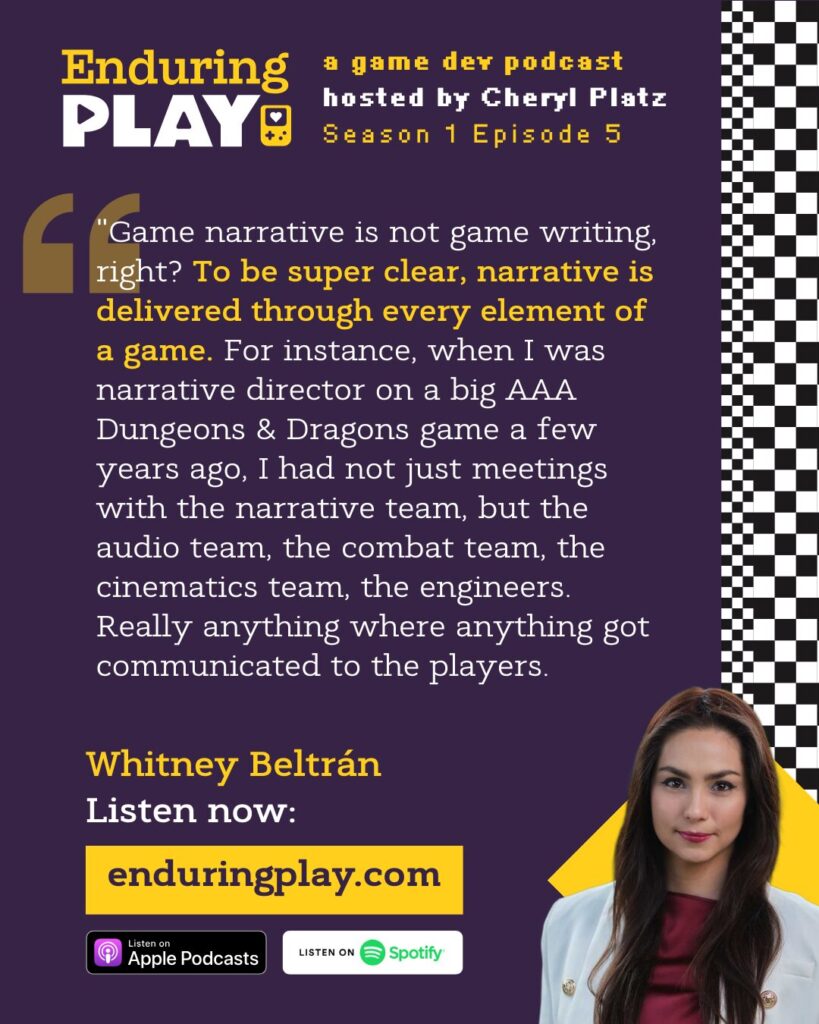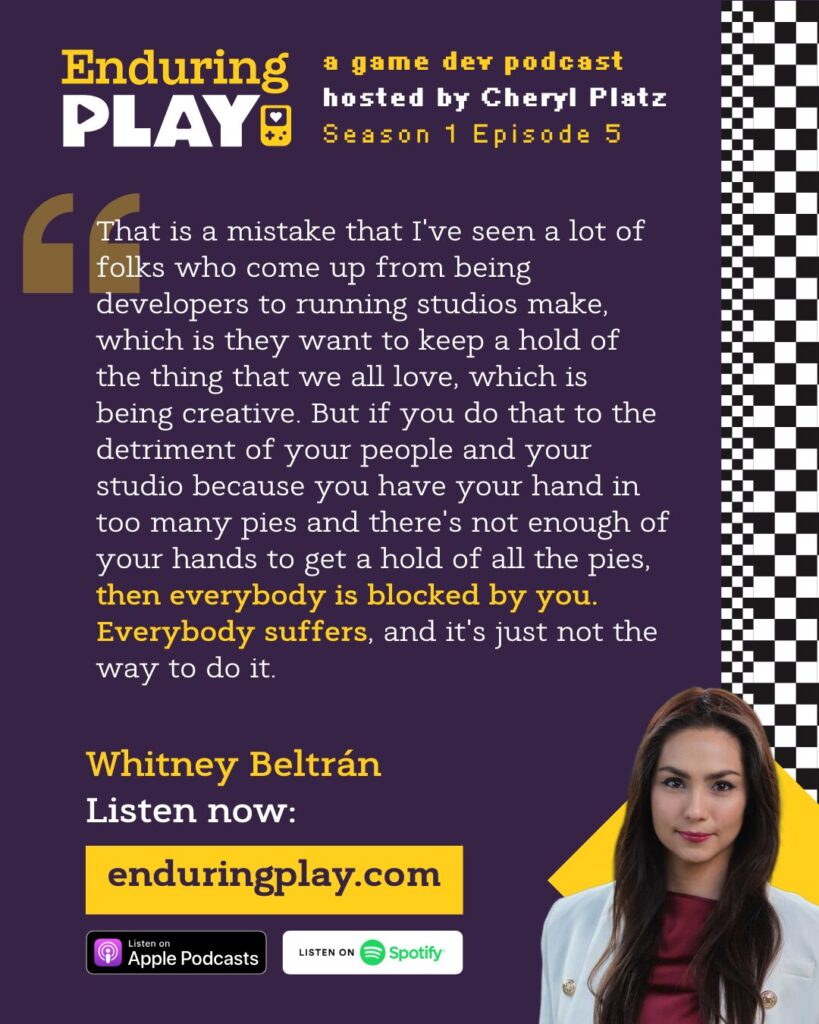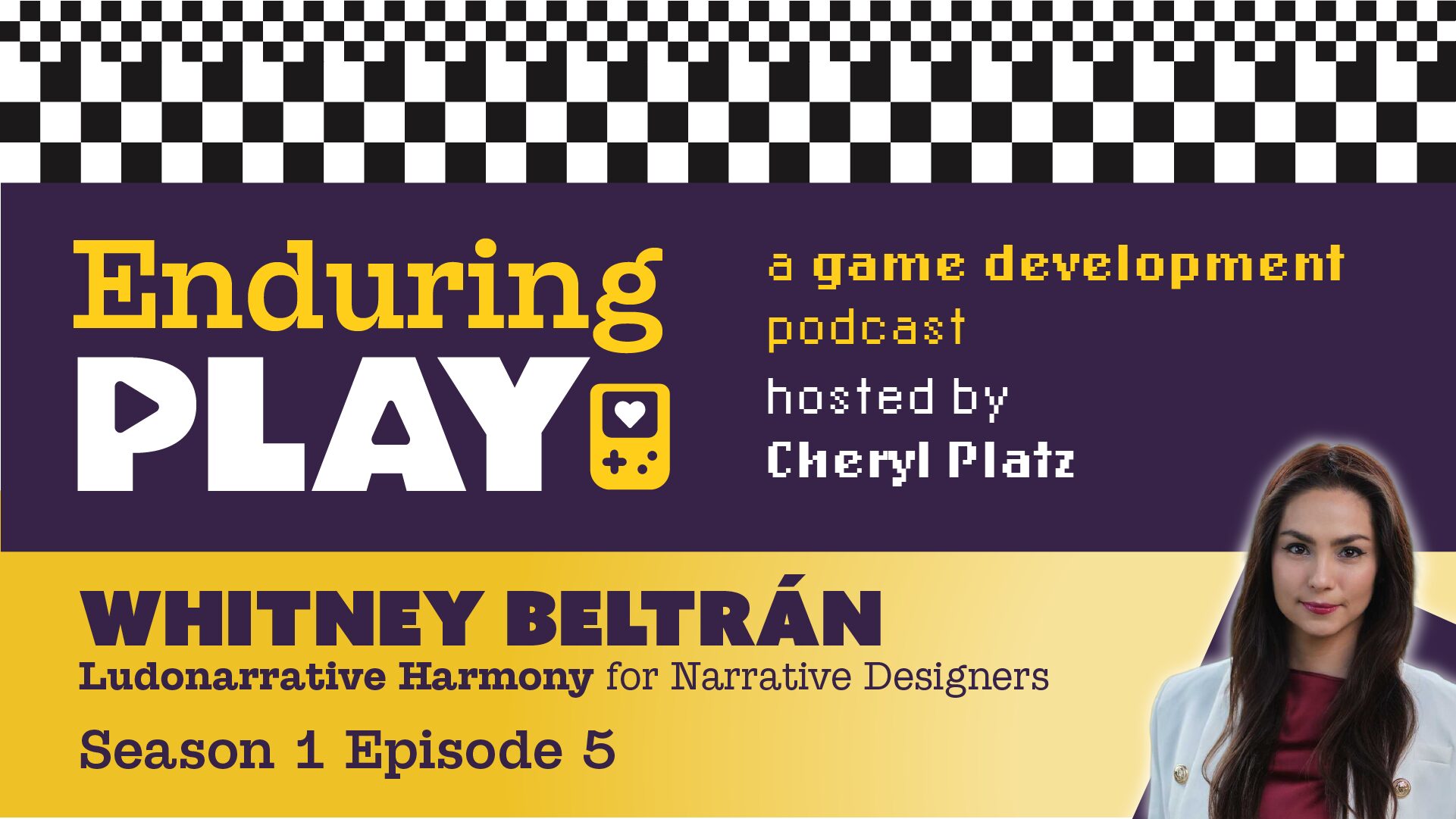The fifth episode of Season 1 of Enduring Play: A Game Development Podcast, hosted by Game Development Strategy Guide author Cheryl Platz, is now live with guest Whitney Beltrán, a multiple award-winning Mexican-American Narrative Director with over 12 years of experience in narrative design and professional writing whose experience spans triple-A video games, mobile games, extended reality games, tabletop roleplaying games, and pretty much anything interactive. Most listeners will be learning plenty of new concepts as the field of narrative design is fairly specialized – but understanding what goes into good narrative design can improve everyone’s game development craft. Our discussion also covers topics like creative leadership and the experience of becoming a studio head for the first time.
Key Quotes
On the varied role of narrative designers:
“The first thing to know about narrative design in video games is the definition of what you do is different from studio to studio. So a narrative designer at one studio may actually be a games writer. They write dialogue and they write plot and they develop characters and they do that specific thing at another studio. Narrative designer may mean technical narrative designer, which is someone who’s scripting and blueprints in unreal and creating narrative systems and doing implementation and not doing any writing at all actually, but just systems work.”
On the definition of ludonarrative:
“Ludonarrative harmony and ludonarrative dissonance, those are two terms that are quite popular among narrative designers. So ludo: play, Narrative: story, harmony gets along. And so what that really means is every aspect of a game is communicating a value or communicating a tone, communicating meaning. That’s everything from swinging your sword, right? Maybe you swing it very gracefully like an elf, or maybe you swing it very, you know, jerkily, like a viking. The animations for that tell a story, set a mood, right? And so when we say ludonarrative harmony, what we mean is the story is being told throughout all the other parts of the game.“
On the difference between narrative design and writing:
“Game narrative is not game writing, right? To just be super clear, narrative is delivered through every element of a game. So, for instance, when I was narrative director on a big AAA Dungeons & Dragons game a few years ago, I had not just meetings with the narrative team, but the audio team, the combat team, the cinematics team, the engineers. Really anything where anything got communicated to the players.”
On the shift to a studio leadership role:
“That is a mistake that I’ve seen a lot of folks who come up from being developers to running studios make, which is they want to keep a hold of the thing that we all love, which is being creative and doing the thing. But if you do that to the detriment of your people and their agency, and you do that to the detriment of your studio because you have your hand in too many pies and there’s not enough of your hands to, you know, get a hold of all the pies, then everybody is blocked by you. Everybody suffers, and it’s just not the way to do it.“
Share on Social Media





